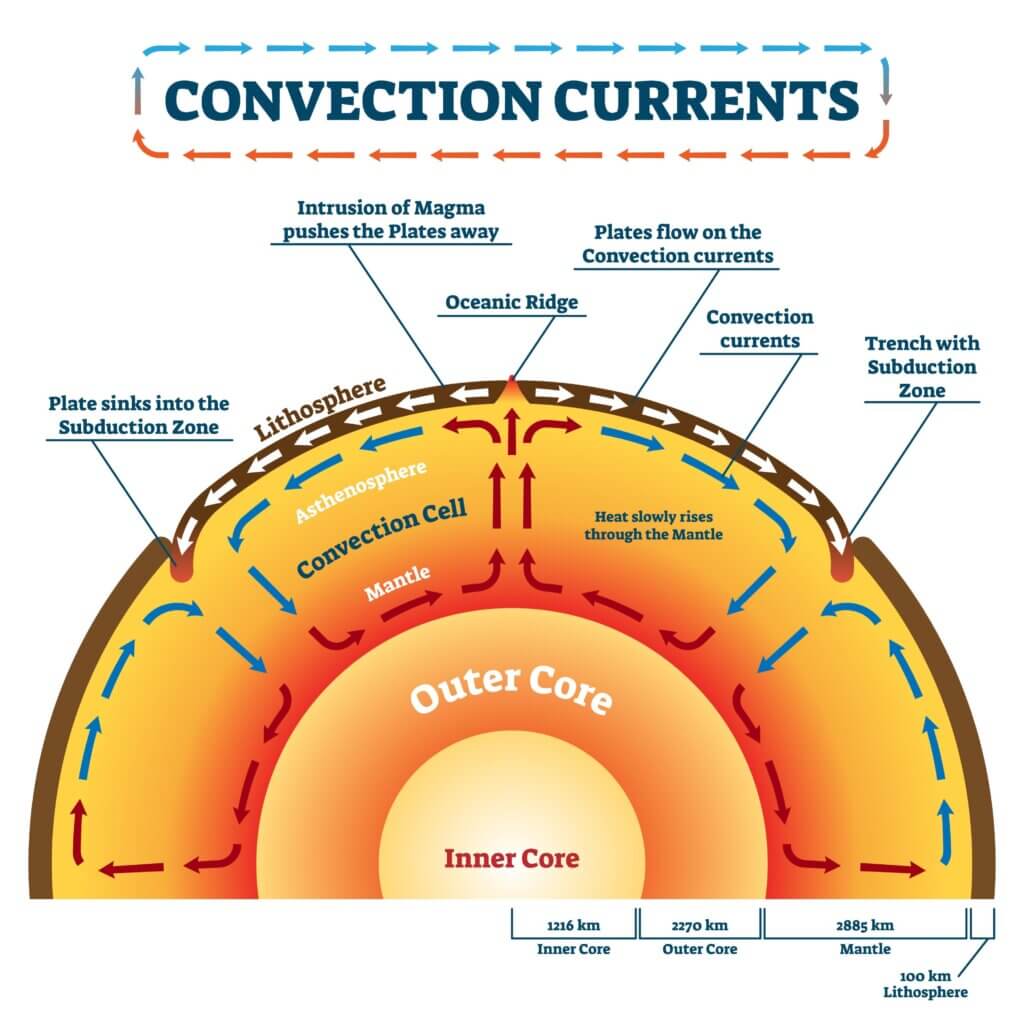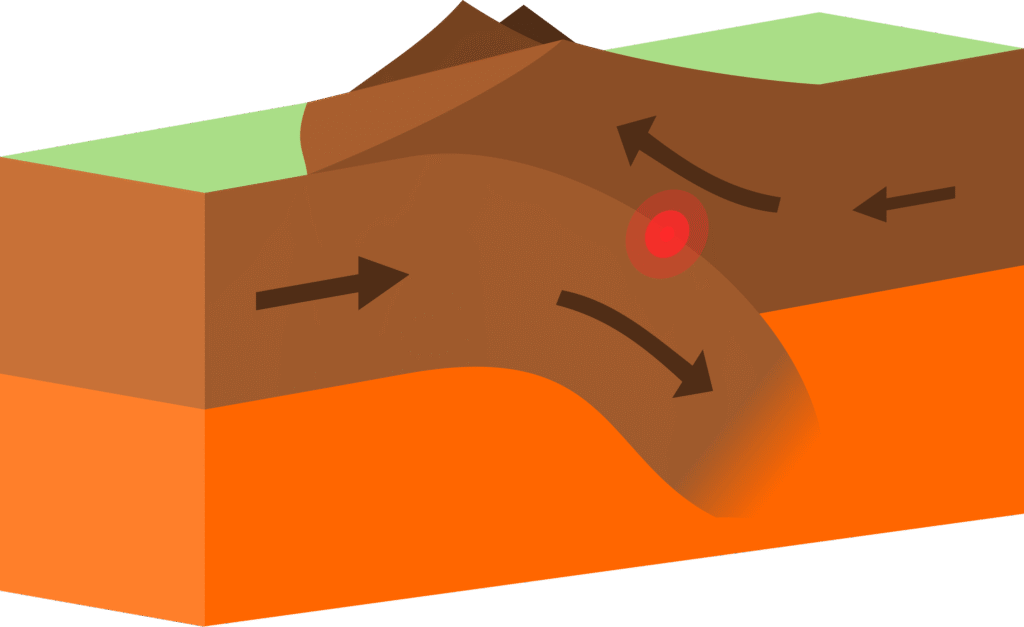In the 1930s, Arthur Holmes, a British geologist, proposed the Convectional Current Theory to address the major criticism of Alfred Wegener’s Continental Drift Theory: the lack of a plausible driving force. Holmes’s theory provided a mechanism for how the continents could move, laying the groundwork for the modern theory of plate tectonics.
Reasoning behind the theory
Holmes’s reasoning followed a logical progression based on his scientific knowledge:
- Connecting Currents to Continental Movement: Holmes hypothesized that these powerful convection currents could act as a conveyor belt for the continents. Where the currents rose and diverged, they could push the continents apart. Where they cooled and descended, they could drag the ocean floor down, providing a mechanism for the continents to be pulled along. This theoretical model provided a plausible, powerful force that could drive the continental drift Wegener had proposed.
- Addressing the “Missing Force”: Wegener’s theory was widely rejected because he couldn’t explain what force was powerful enough to move entire continents. His proposals of pole-fleeing and tidal forces were mathematically proven to be insufficient. Holmes saw this gap as a challenge to solve.
- Radioactive Heat as an Energy Source: Holmes was a pioneer in using radioactive decay to determine the age of rocks. He understood that the decay of radioactive elements within the Earth’s interior generated a tremendous amount of heat. He proposed that this heat was not lost but accumulated within the mantle.
- The Principle of Convection: Knowing that heated, less dense material rises while cooler, denser material sinks, Holmes applied this basic principle of physics to the Earth’s mantle. He theorised that the immense heat from radioactive decay would cause the semi-fluid mantle material to rise in some areas and sink in others. This continuous, slow circulation created convection currents.

Significance of Convectional Current Theory
Holmes’s theory was a monumental step forward for geology because it provided a solid physical basis for continental movement. The idea of a powerful, internal engine driving the movement of continents gave the theory of continental drift new life.
His model explained several key phenomena:
- Continental Movement: The currents could push, pull, and shear the continents, causing them to drift, collide, and break apart.
- Mountain Building: Where converging currents forced continental plates to collide, the landmasses would buckle and fold, forming mountain ranges.
- Formation of Oceans: The rising, divergent currents could pull continents apart, leading to the creation of new oceans.

Holmes’s theory was largely speculative at the time, as there was no direct evidence of mantle convection. However, his ideas were instrumental in the development of the Theory of Plate Tectonics in the 1960s, which combined his concept of convection with evidence of seafloor spreading and palaeomagnetism. Today, Arthur Holmes is recognised as a key figure who provided the crucial “how” behind continental drift.